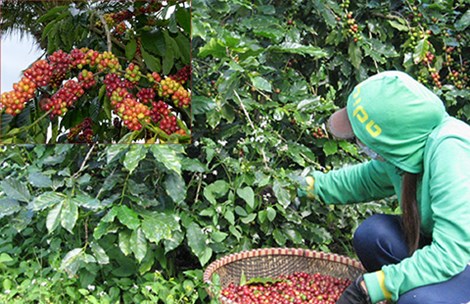
A kilo of roasted Da Lat Arabica is sold for nearly $50, or VND1.2 million, as a high-end product.
The world’s Number 1 coffee is sold in the Central Highlands of Vietnam. However, its growing area has shrunk dramatically.
According to the Da Lat City Statistics Office, there are about 3,400 coffee growing areas in the city, mostly Arabica beans, grown in three communes of Xuan Truong, Tram Hanh and Ta Nung. The Da Lat Arabica growing area and output have been decreasing steadily.
Truong Dien Ty, 64, in Xuan Truong Commune, who began growing coffee at aged 10, said he and many other households in the locality have given up growing Arabica.
“We have shifted to grow Robusta, tea and pepper to earn bigger money,” he explained.
A local man told reporters that Arabica is ‘difficult to grow’ because of insects and unfavorable conditions.
“It is vulnerable when the temperature is too low, or farmers do not treat it well,” he explained. “Meanwhile, Robusta is easier to grow. It brings higher yield and better resistant to insects.”
One hectare of Arabica growing area can bring 1.5-2 tons of coffee, while the Robusta 8-10 tons. One ton of Robusta is sold for VND34-35 million. Arabica is more expensive, priced at VND40-42 million, which is not high enough to cover the high investment rate.
An expert, while warning that Da Lat Arabica may disappear in the future, said that farmers will continue growing this variety of coffee if the profit they can expect from Arabica is higher or at least equal to the profit from other crops.
Ha Phuoc Ta, secretary of the Xuan Truong Commune’s Communist Party Committee, said that local households have chopped down Arabica to cultivate other crops in recent years, when they incurred loss due to insects.
“The Arabica growing area in the commune has decreased by 300 hectares in the last five years to 1,000 hectares,” Ta said.
PL TPHCM